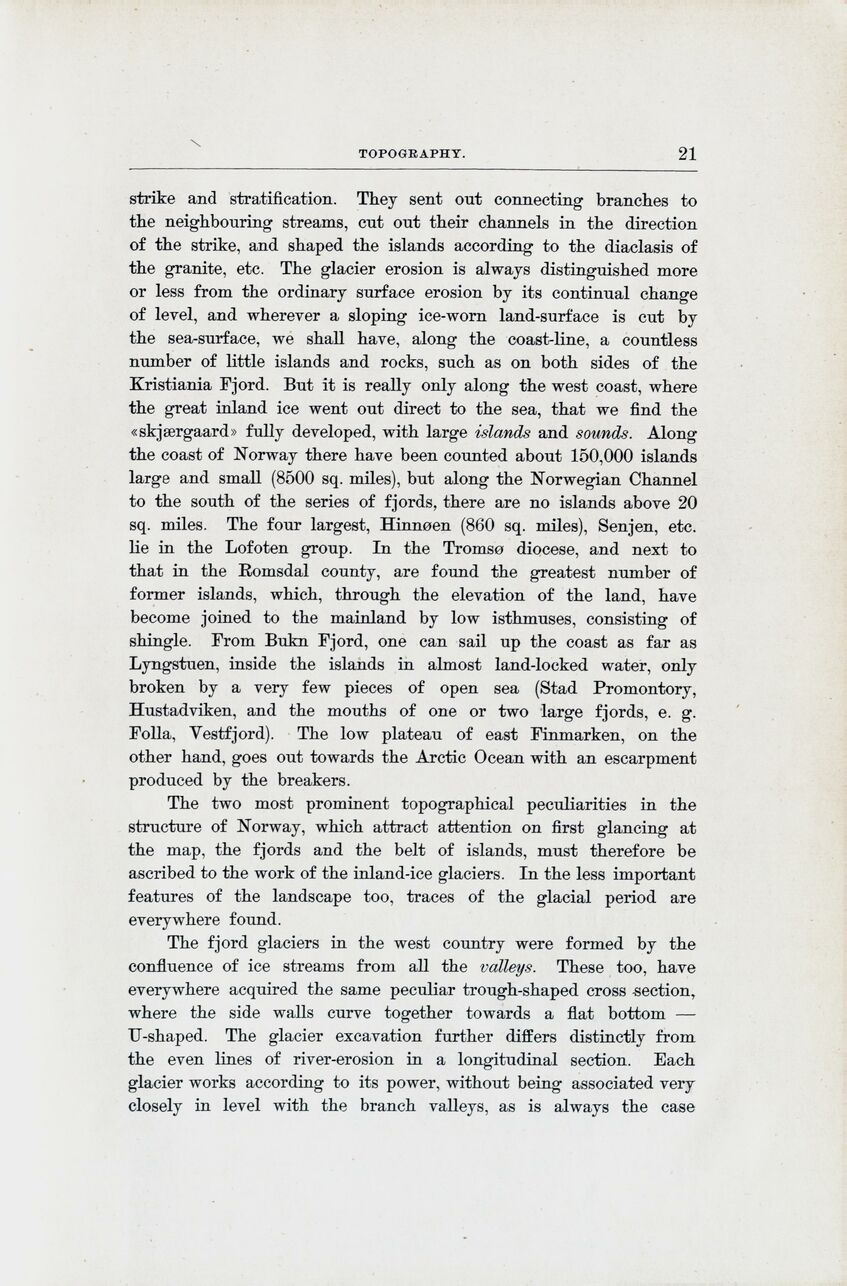
Full resolution (JPEG) - On this page / på denna sida - Topography, by Andr. M. Hansen

<< prev. page << föreg. sida << >> nästa sida >> next page >>
Below is the raw OCR text
from the above scanned image.
Do you see an error? Proofread the page now!
Här nedan syns maskintolkade texten från faksimilbilden ovan.
Ser du något fel? Korrekturläs sidan nu!
This page has been proofread at least once.
(diff)
(history)
Denna sida har korrekturlästs minst en gång.
(skillnad)
(historik)
strike and stratification. They sent out connecting branches to
the neighbouring streams, cut out their channels in the direction
of the strike, and shaped the islands according to the diaclasis of
the granite, etc. The glacier erosion is always distinguished more
or less from the ordinary surface erosion by its continual change
of level, and wherever a sloping ice-worn land-surface is cut by
the sea-surface, we shall have, along the coast-line, a countless
number of little islands and rocks, such as on both sides of the
Kristiania Fjord. But it is really only along the west coast, where
the great inland ice went out direct to the sea, that we find the
«skjærgaard» fully developed, with large islands and sounds. Along
the coast of Norway there have been counted about 150,000 islands
large and small (8500 sq. miles), but along the Norwegian Channel
to the south of the series of fjords, there are no islands above 20
sq. miles. The four largest, Hinnøen (860 sq. miles), Senjen, etc.
lie in the Lofoten group. In the Tromsø diocese, and next to
that in the Romsdal county, are found the greatest number of
former islands, which, through the elevation of the land, have
become joined to the mainland by low isthmuses, consisting of
shingle. From Bukn Fjord, one can sail up the coast as far as
Lyngstuen, inside the islands in almost land-locked water, only
broken by a very few pieces of open sea (Stad Promontory,
Hustadviken, and the mouths of one or two large fjords, e. g.
Folla, Vestfjord). The low plateau of east Finmarken, on the
other hand, goes out towards the Arctic Ocean with an escarpment
produced by the breakers.
The two most prominent topographical peculiarities in the
structure of Norway, which attract attention on first glancing at
the map, the fjords and the belt of islands, must therefore be
ascribed to the work of the inland-ice glaciers. In the less important
features of the landscape too, traces of the glacial period are
everywhere found.
The fjord glaciers in the west country were formed by the
confluence of ice streams from all the valleys. Th«»se too, have
everywhere acquired the same peculiar trough-shaped cross section,
where the side walls curve together towards a flat bottom —
U-shaped. The glacier excavation further differs distinctly from
the even lines of river-erosion in a longitudinal section. Each
glacier works according to its power, without being associated very
closely in level with the branch valleys, as is always the case
<< prev. page << föreg. sida << >> nästa sida >> next page >>